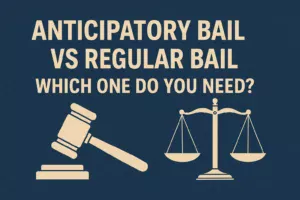In this article we have discussed about Enforcement Challenges Of The Wild Animal Protection Act
Enforcement Challenges of the Wild Animal Protection Act in Indian Law
The Wild Animal Protection Act in India, aimed at preserving the country’s rich biodiversity and protecting endangered species, faces numerous enforcement challenges. These challenges stem from a variety of factors, including legal loopholes, lack of resources, and human-wildlife conflict. This article explores these enforcement challenges in detail and suggests potential solutions to make the Act more effective.
Understanding the Wild Animal Protection Act
The Wild Animal Protection Act in India is a key piece of legislation that governs the protection of wildlife and their habitats. It outlines penalties for poaching, illegal trade, and damage to habitats, aiming to conserve India’s natural heritage. Despite its comprehensive scope, the Act encounters several enforcement hurdles.
Legal Framework and Loopholes
Legal Framework
The Wildlife (Protection) Act, 1972
- Purpose: The cornerstone of wildlife legislation in India, it provides the legal structure for the protection of wild animals, birds, and plant species to ensure environmental and ecological security.
- Key Provisions: It prohibits hunting of protected species, regulates trade in wildlife products, and prescribes penalties for illegal activities. It also establishes schedules of protected species, with varying degrees of protection.
Forest Conservation Act, 1980
- Purpose: This Act aims to conserve India’s forests and to regulate deforestation and land use changes that affect forest areas.
- Key Provisions: It restricts the de-reservation of forests and conversion of forest land to non-forest purposes without the prior approval of the central government, thereby indirectly protecting wildlife habitats.
The Environment (Protection) Act, 1986
- Purpose: Enacted to provide for the protection and improvement of the environment, it complements wildlife conservation efforts by addressing pollution and industrial impacts.
- Key Provisions: It empowers the central government to take measures necessary to protect and improve the environment and to set standards for emissions and discharges of pollutants into the environment.
The Biological Diversity Act, 2002
- Purpose: This Act was introduced to conserve biological diversity, ensure sustainable use of its components, and ensure the fair and equitable sharing of benefits arising from the use of genetic resources.
- Key Provisions: It regulates access to biological resources and associated knowledge, as well as their conservation and sustainable use.
Project Tiger and Project Elephant
- Purpose: These are government initiatives specifically designed to protect India’s tigers and elephants through habitat preservation, anti-poaching operations, and increasing awareness about conservation.
- Key Provisions: They include creating and managing reserves designated for these species, implementing conservation plans, and monitoring populations and threats.
State Wildlife Laws
- Purpose: In addition to national laws, individual states in India may enact their own legislation or rules to address specific regional wildlife conservation needs and challenges.
- Key Provisions: These laws can complement the national legal framework by addressing local issues, providing for the establishment of protected areas, and involving communities in conservation efforts.
International Conventions
- Purpose: India is a party to several international conventions that influence its wildlife protection framework, including the Convention on International Trade in Endangered Species of Wild Fauna and Flora (CITES), the Convention on Biological Diversity (CBD), and the Ramsar Convention on Wetlands.
- Key Provisions: These conventions require India to take measures to protect endangered species and their habitats, regulate international trade in endangered species, and conserve biodiversity and wetlands.
H4: Legal Loopholes
1. Ambiguous Definitions
- Issue: The Act sometimes contains vague definitions of critical terms such as “wildlife habitat,” “endangered species,” and “poaching.” This ambiguity can lead to varying interpretations, making enforcement challenging.
- Implication: Offenders may exploit these ambiguities to avoid prosecution or receive lighter sentences.
2. Overlap with Other Laws
- Issue: There is an overlap between the Wild Animal Protection Act and other environmental and forest laws, leading to confusion and jurisdictional conflicts.
- Implication: This can result in delays in legal proceedings and weaken the prosecution of wildlife crimes.
3. Inadequate Penalties
- Issue: For certain offenses, the penalties prescribed by the Act may not be commensurate with the severity of the crime, especially in the case of rare or endangered species.
- Implication: Inadequate penalties fail to serve as a deterrent to potential offenders, thereby not effectively preventing wildlife crimes.
4. Lack of Provision for Modern Poaching Methods
- Issue: The Act does not always account for modern poaching methods and technologies, such as the use of drones or cyber-enabled wildlife trade.
- Implication: This makes it difficult to prosecute crimes involving advanced technologies under the current legal framework.
5. Insufficient Protection for Habitats
- Issue: While the Act focuses on protecting animals, the protection offered to their habitats can sometimes be insufficient, failing to address issues like habitat fragmentation and environmental pollution.
- Implication: Without comprehensive habitat protection, conservation efforts may not be fully effective, as animals need healthy ecosystems to thrive.
6. Limited Community Engagement Provisions
- Issue: The Act does not sufficiently emphasize the role of local communities in wildlife conservation, nor does it provide clear guidelines for their engagement and empowerment.
- Implication: This overlooks the potential of community-based conservation efforts, which can be highly effective in protecting wildlife and habitats.
7. Challenges in Enforcement Mechanism
- Issue: There are often challenges related to the enforcement mechanism itself, including insufficient training for enforcement officers and lack of access to modern technology.
- Implication: This can lead to ineffective monitoring and enforcement, allowing illegal activities to continue unabated.
8. Jurisdictional Issues in Wildlife Crime
- Issue: Wildlife crimes often cross state and national boundaries, but jurisdictional issues can complicate the investigation and prosecution of these crimes.
- Implication: Cross-jurisdictional crimes require coordination that is not always feasible under the current legal framework, leading to gaps in enforcement.
Resource Constraints and Implementation
Another significant challenge is the lack of adequate resources for enforcement agencies. Limited funding, manpower, and technological support hamper the capacity of these agencies to effectively monitor vast wildlife habitats and enforce the law.
Impact of Resource Limitations
The impact of resource limitations is profound, with many protected areas justify under-monitored. This situation allows illegal activities to flourish, threatening the survival of many species.
Human-Wildlife Conflict: A Growing Concern
Human-wildlife conflict presents another major challenge to the enforcement of the Wild Animal Protection Act. As human populations expand into wildlife habitats, instances of conflict increase, often leading to retaliatory killings of animals.
Addressing Human-Wildlife Conflict
Efforts to mitigate human-wildlife conflict must focus on creating harmony between conservation objectives and the needs of local communities. This includes implementing effective compensation schemes for loss of life or property and promoting coexistence strategies for protecting wildlife
Technological Solutions and Community Involvement
To overcome these enforcement challenges, leveraging technology and involving local communities in wildlife conservation are crucial steps.
Role of Technology in Enhancing Enforcement
Advanced technologies, such as satellite imagery, drones, and camera traps, can significantly improve the monitoring of protected areas. These tools enable real-time surveillance and evidence collection, enhancing the efficiency of enforcement efforts.
Empowering Communities for Conservation
Involving local communities in conservation efforts can lead to more sustainable outcomes. Community-based conservation programs can foster a sense of ownership and responsibility towards wildlife protection among local populations.
Moving Forward: Strengthening Enforcement
To strengthen the enforcement of the Wild Animal Protection Act, a multi-faceted approach is necessary. This includes legal reforms to address loopholes, enhanced resource allocation, the use of technology, and community engagement in conservation efforts.
Policy Recommendations
- Legal Reforms: Amend the Act to close existing legal loopholes and streamline judicial processes.
- Resource Allocation: Increase funding and resources for wildlife protection agencies.
- Technology Integration: Adopt modern surveillance and monitoring technologies.
- Community Engagement: Promote community-based conservation initiatives.
Final Answer
The enforcement challenges of the Wild Animal Protection Act in India are significant but not insurmountable. Addressing legal loopholes, resource constraints, human-wildlife conflict, and leveraging technology and community involvement are key to enhancing the effectiveness of wildlife protection efforts. With concerted action in these areas, India can ensure the long-term conservation of its unique biodiversity.
FAQs on the Enforcement Challenges of the Wild Animal Protection Act in India
1. What is the Wild Animal Protection Act in India?
It’s legislation aimed at protecting India’s wildlife and their habitats, prescribing penalties for poaching, illegal trade, and habitat destruction.
2. Why is the Wild Animal Protection Act important?
The Act is crucial for conserving biodiversity, protecting endangered species, and maintaining ecological balance.
3. What are the major challenges in enforcing the Act?
Challenges include legal loopholes, inadequate resources, human-wildlife conflict, and the need for community involvement.
4. How do legal loopholes affect the Act’s enforcement?
Loopholes provide offenders with escape routes, making it difficult to secure convictions for wildlife crimes.
5. Can you give an example of a legal loophole?
An example includes ambiguous definitions that allow poachers to exploit the law, avoiding penalties.
6. What impact do resource limitations have on wildlife protection?
Limited funding and manpower hinder effective monitoring and law enforcement, allowing illegal activities to thrive.
7. How does human-wildlife conflict challenge the Act?
As human populations encroach on wildlife habitats, conflicts increase, leading to retaliatory killings and habitat destruction.
8. What strategies can mitigate human-wildlife conflict?
Strategies include compensation for losses, coexistence initiatives, and community engagement in conservation efforts.
9. How can technology improve the enforcement of the Act?
Technology like drones, satellite imagery, and camera traps can enhance monitoring and evidence collection.
10. Why is community involvement important in wildlife conservation?
Communities can help in monitoring, reporting crimes, and fostering a conservation culture, leading to more sustainable protection efforts.
11. What legal reforms are suggested to strengthen the Act?
Reforms include amending the Act to close loopholes and streamline judicial processes for swifter action against offenders.
12. How can the government increase resources for wildlife protection?
Increasing budget allocations, manpower, and technological support for enforcement agencies are key steps.
13. What role do NGOs play in wildlife protection under the Act?
NGOs assist in awareness, rehabilitation, legal advocacy, and supporting enforcement efforts through resources and expertise.
14. Can traditional knowledge contribute to wildlife conservation?
Yes, indigenous practices and knowledge can offer sustainable conservation strategies and enhance biodiversity protection.
15. How are poachers penalized under the Act?
Penalties include fines, imprisonment, or both, depending on the severity of the offense.
16. Are there any provisions for the protection of habitat under the Act?
The Act includes provisions for the creation of protected areas and restricts activities leading to habitat destruction.
17. What are the challenges in prosecuting wildlife crimes?
Challenges include collecting admissible evidence, legal loopholes, and delayed judicial processes.
18. How can international cooperation aid in enforcing the Act?
International cooperation can help in controlling illegal wildlife trade and sharing best practices for conservation.
19. What impact does illegal wildlife trade have on species?
Illegal trade threatens species with extinction, disrupts ecosystems, and leads to loss of biodiversity.
20. How does the Act address the issue of illegal wildlife trade?
It includes stringent penalties for illegal trade and provisions for international cooperation to curb such activities.
21. Can the public help in enforcing the Act?
Public awareness and reporting suspected wildlife crimes can significantly aid enforcement efforts.
22. What measures are in place for the rehabilitation of confiscated wildlife?
The Act provides for the establishment of rescue centers and rehabilitation efforts to reintroduce confiscated animals into the wild.
23. How is wildlife monitoring conducted under the Act?
Monitoring involves patrolling, technological surveillance, and community reporting mechanisms.
24. Are there any success stories in wildlife conservation in India?
Yes, projects like the Project Tiger and Project Elephant have shown significant success in conservation efforts.
25. How does habitat destruction impact wildlife?
Habitat destruction leads to loss of shelter and food sources, pushing species towards endangerment or extinction.
26. What is the role of wildlife sanctuaries under the Act?
Sanctuaries provide safe habitats for wildlife, allowing them to live and breed in a protected environment.
27. How does climate change affect wildlife protection efforts?
Climate change alters habitats and availability of resources, complicating conservation efforts and enforcement of the Act.
28. Are there specific provisions for endangered species under the Act?
The Act includes special provisions for the protection of endangered species, with stricter penalties for offenses against them.
29. How can schools contribute to wildlife conservation?
Education programs in schools can raise awareness among young people, fostering a culture of conservation.
30. What future steps are needed to enhance the enforcement of the Act?
Future steps include strengthening legal frameworks, enhancing resources, adopting new technologies, and fostering global cooperation.
Sources:-













